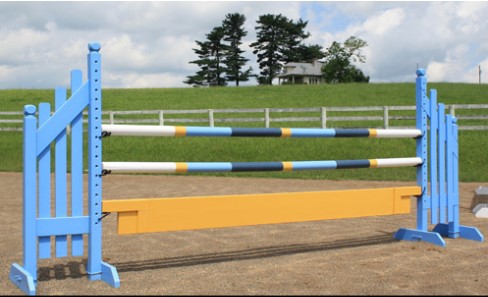The Importance of Horse Jump Standards in Equestrian Sports
Horse jump standards are essential in ensuring the success and safety of equestrian sports. These standards dictate the design and setup of jumps, making competitions fair and standardized across the board. By following these guidelines, riders and horses can compete on an even playing field, ensuring that skills and performance are assessed accurately. For instance, the schooling horse jumps used in arenas must meet certain specifications to prepare riders and horses for competitive events. Enthusiasts and professionals rely on these guidelines to achieve consistency and exceptional performance.
Table of Contents
Moreover, jump standards contribute to the advancement of the sport by promoting innovation and improvement in training techniques. A standardized set of rules and guidelines allows for the development of new training methods to be evaluated and replicated across different settings. This not only elevates the level of competition but also ensures that the sport remains dynamic and engaging for participants and spectators alike.
Common Materials Used in Horse Jump Standards
Materials matter regarding the durability and appearance of horse jump standards. Wood, plastic, and metal are among the most commonly used materials. Wooden jumps offer a classic and aesthetic appeal but require more maintenance. They can be painted or stained to match the overall theme of the arena, adding a touch of elegance to the setting. However, wood is susceptible to weather damage and may need frequent repairs and treatments to maintain its condition.
Plastic jumps are gaining popularity due to their lightweight nature and resistance to weathering. They are easy to clean, less prone to damage, and often come in vibrant colors that enhance the course’s visual appeal. Plastic standards are also more flexible, allowing for safer impacts in case of a fall or collision. Metal jumps provide unparalleled stability and are ideal for permanent installations. They are sturdy and withstand heavy use, making them suitable for high-traffic areas and professional competitions.
Safety Considerations for Horse Jump Standards
Safety should be the top priority in any equestrian setup. Properly constructed and positioned horse jump standards help minimize risks and prevent injuries. When setting up a course, it is vital to ensure that the jumps are stable and defects-free. The base of the standards should be wide and heavy enough to prevent tipping, and the cups holding the jump rails should break away or collapse under pressure to avoid harming the horse or rider.
Additionally, the placement of jumps should consider the horse’s natural movement and stride to avoid abrupt stops or awkward landings. Courses should encourage smooth and flowing patterns that allow horses to maintain their momentum and balance throughout the jump sequence. The safety of the arena can be further improved by routinely checking and maintaining the jump standards, which can also aid in spotting possible risks before they worsen.
Maintenance Tips for Long-lasting Horse Jump Standards
Regular upkeep of horse jump standards can extend their lifespan and ensure continued safety and performance. It is essential to do routine inspections to spot and fix any wear or damage indicators. This includes checking for loose screws, cracked or splintered wood, and rust or corrosion on metal parts. Prompt repairs can stop little faults from becoming bigger ones that could jeopardize the jumps’ safety.
Cleaning the jumps to remove dirt and grime is also crucial, as accumulated debris can weaken the materials over time. Apply protective treatments, such as sealants or rust inhibitors, to safeguard against weather damage. Storing jump standards in a sheltered area when not in use can also help prolong their life by protecting them from harsh environmental conditions.
Choosing the Right Horse Jump Standards for Your Arena
Several factors come into play when selecting horse jump standards. Consider the competition type, whether for schooling or official events, and the skill level of the participating horses and riders. Lower and wider jumps with forgiving materials may be more appropriate for beginners and inexperienced horses, while advanced competitors might benefit from higher and more challenging standards.
The size and layout of your arena will also influence your choice, as it will determine the number and types of jumps that can be accommodated comfortably. Ensure that the standards fit well within the available space and keep the arena manageable, as this can hinder movement and increase the risk of accidents. Additionally, look for standards that are durable, easy to adjust, and meet the regulatory requirements of the sport. Investing in high-quality jump standards can enhance the overall experience and performance of both horse and rider.
Expert Opinions on Horse Jump Standards
Industry experts agree that the quality of horse jump standards can significantly impact the training and performance of both horse and rider. They recommend investing in well-built, reliable standards that can withstand the rigors of regular use. High-quality materials and construction ensure safety and provide a consistent and dependable experience during practice and competition.
According to equestrian professionals, using high-quality standards ensures safety and helps achieve better consistency and results in training sessions and competitions. Experts also emphasize the importance of regular maintenance and proper setup to maximize the benefits of horse jump standards. Following these best practices and staying informed about the latest trends and innovations can create a safe, efficient, and enjoyable training environment for your horse and yourself.



